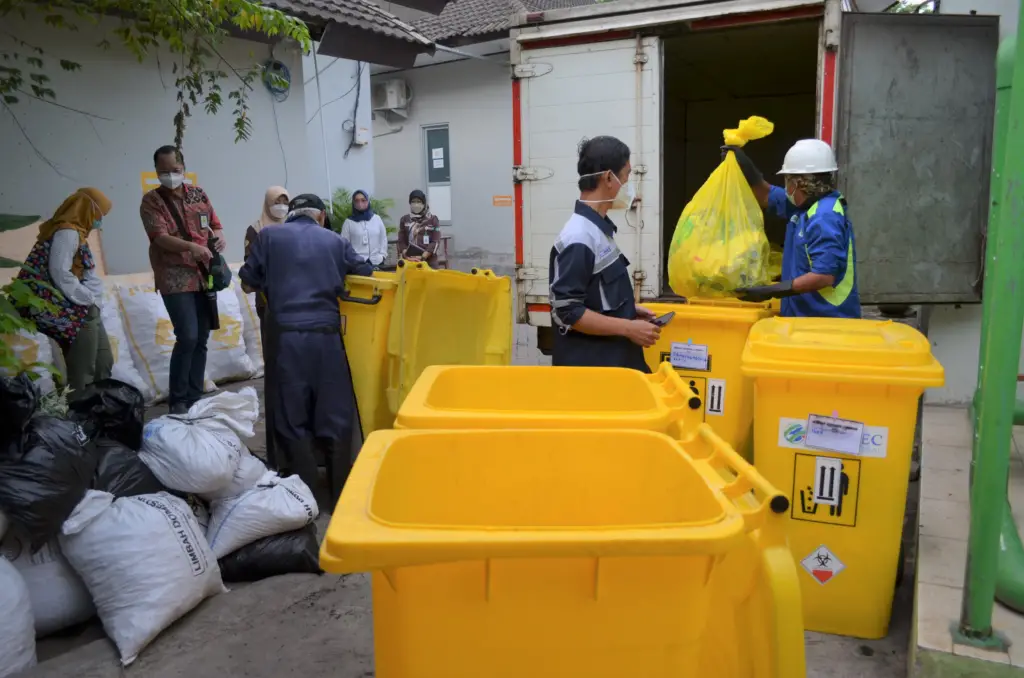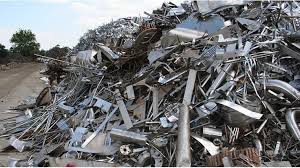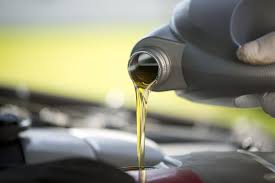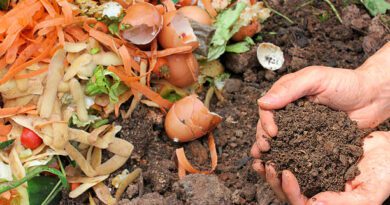A Comprehensive Guide to Defining Solid Wastes
Solid wastes are things we throw away. They can be paper, plastic, food scraps, or things we don’t need anymore. When we finish using something, like a bottle or a wrapper, it becomes a solid waste if we don’t use it again. Solid wastes can be a big problem because they can harm the environment if we don’t manage them properly.
When we throw solid wastes on the ground or in rivers, they can make the place dirty and smelly. Nobody likes to live in a dirty place. Also, solid wastes can be dangerous for animals. They might eat the wastes and get sick. Some animals might even get stuck in the wastes and can’t move.
Solid wastes also take up a lot of space. If we keep throwing things away without thinking, soon there will be no place left for new things. Imagine if your room is full of toys and there’s no space to play. That’s what happens when we don’t manage solid wastes properly.
But there are ways to deal with solid wastes. We can recycle them. Recycling means taking things we don’t need anymore and turning them into something new. For example, old newspapers can be recycled into new paper. This helps to save trees and keeps the environment clean.
Another way to deal with solid wastes is by composting. Composting means collecting food scraps like fruit peels and vegetable leftovers and letting them break down naturally. This creates a nutrient-rich soil called compost that can be used to grow plants. It’s like giving back to the earth.
Also, we can reduce the amount of solid wastes we produce. Instead of using disposable plastic bags, we can use reusable cloth bags. Instead of buying bottled water, we can use refillable water bottles. These small changes can make a big difference in reducing solid wastes.
It’s important for everyone to be responsible for their solid wastes. We should throw them in the right bins for recycling or composting. We should also try to buy things with less packaging to reduce waste. By working together, we can keep our environment clean and healthy for everyone.
Understanding what constitutes solid waste, its types, and effective management strategies is of paramount importance for environmental sustainability, public health, and the overall well-being of our planet.
In this comprehensive overview, we will delve into the definition of solid wastes and explore the systems that remove them, shedding light on the complexities and challenges associated with managing these wastes in our ever-evolving world.
Read Also: How To Fix a Garbage Disposal Jam
What Are Solid Wastes?

Solid wastes, as the term implies, refer to materials that are no longer needed or useful and are, therefore, discarded. They encompass a wide range of materials, from household trash to industrial byproducts.
The definition of solid waste may vary by region and regulatory framework, but in general, solid waste includes any non-liquid materials that are discarded and are of no further value to their owners.
Solid wastes can be classified into two main categories:
1. Municipal Solid Waste (MSW): This category includes everyday items that we use and discard, such as food waste, packaging materials, household appliances, and more. MSW is generated by residential, commercial, and institutional activities and is typically collected by local authorities.
2. Non-Municipal Solid Waste (NMSW): NMSW consists of waste generated by industrial processes, construction and demolition activities, agriculture, and other non-residential sectors. It often includes hazardous materials, such as chemicals and electronic waste, which require special handling and disposal methods.
The Environmental Impact of Solid Wastes

The management of solid wastes is not merely a matter of aesthetics; it has profound environmental implications. When solid wastes are not properly managed, they can have detrimental effects on the environment. These effects include:
1. Land Pollution: Improper disposal of solid waste can lead to contamination of land and soil, making it unsuitable for agriculture or other productive uses. Landfills, if not properly maintained, can leak harmful substances into the ground, further exacerbating the problem.
2. Air Pollution: Waste incineration, a method used to reduce the volume of solid waste, can release harmful pollutants into the atmosphere, contributing to air pollution and affecting human health.
3. Water Pollution: Leachate, a liquid that forms as water percolates through waste materials, can carry pollutants into groundwater and surface water bodies, leading to water pollution. This pollution can harm aquatic ecosystems and impact drinking water sources.
4. Habitat Destruction: The improper disposal of waste can lead to the destruction of natural habitats and ecosystems. Wildlife can be adversely affected by waste materials, either directly through ingestion or indirectly through habitat disruption.
5. Greenhouse Gas Emissions: Solid waste decomposition in landfills produces methane, a potent greenhouse gas that contributes to global warming and climate change.
Read Also: All You Need to Know About Paint Waste Disposal
The System that Removes Solid and Liquid Wastes
Managing solid waste effectively requires a well-structured and comprehensive system. This system involves several key components and stakeholders working together to minimize waste generation, maximize recycling and recovery, and safely dispose of the remaining waste. Let’s explore the components of the system that removes solid and liquid wastes:
1. Waste Generation and Segregation
The process begins at the source, where waste is generated. Households, businesses, and industries all contribute to waste generation.
Proper waste segregation at this stage is critical. Segregation involves separating recyclables, organic materials, and hazardous waste from non-recyclable waste. Effective segregation streamlines the waste management process and facilitates recycling and recovery efforts.
2. Collection and Transportation
The collected waste must be transported from the source to a processing facility or disposal site. This process involves waste collection vehicles, which can range from small trucks servicing residential areas to large, specialized vehicles for industrial waste. The efficiency of collection and transportation impacts the overall system’s effectiveness and environmental impact.
3. Treatment and Disposal
Materials that cannot be recycled or recovered often referred to as residual waste, must be treated and disposed of in an environmentally responsible manner.
Common methods include landfilling, incineration, and composting. Landfills are engineered sites designed to contain and manage waste, while incineration involves controlled burning of waste to generate energy. Composting is the natural decomposition of organic waste into nutrient-rich soil conditioners.
4. Hazardous Waste Management
Hazardous waste, which includes chemicals, industrial byproducts, and electronic waste, poses unique challenges. These materials require specialized handling, storage, and disposal to prevent harm to human health and the environment. Hazardous waste management is regulated by stringent laws and often involves specialized treatment facilities.
5. Regulatory Framework
The management of solid and liquid wastes is subject to a complex web of regulations, policies, and standards at local, national, and international levels.
These regulations are designed to ensure public health, environmental protection, and sustainable waste management practices. Adherence to these regulations is vital for the responsible management of waste.
5. Technology and Innovation
Advancements in technology play a crucial role in improving waste management practices. Innovations include waste-to-energy technologies that generate power from waste, improved recycling processes, and waste sorting automation. Technology not only enhances efficiency but also reduces the environmental impact of waste management.
Challenges and Future Perspectives Of Solid Wastes
While waste management systems have evolved significantly in recent decades, challenges persist. One of the most pressing challenges is the sheer volume of waste generated globally.
As the world’s population continues to grow and urbanize, waste generation is on the rise. Additionally, the proliferation of single-use plastics and electronic devices has led to an increase in non-recyclable waste.
Innovations and sustainability are key to addressing these challenges. Circular economy principles, which emphasize the reuse and recycling of materials, are gaining traction as a more sustainable approach to waste management. Waste reduction initiatives, such as zero-waste programs, encourage individuals and businesses to minimize waste generation.
In the future, the waste management industry will likely see greater integration of technology, with the use of artificial intelligence and robotics for sorting and recycling.
Additionally, sustainable waste-to-energy technologies, including advanced incineration processes and biogas generation from organic waste, are expected to play a larger role in waste management.
In conclusion, defining solid waste is a fundamental step in understanding the complexity of waste management. The system that removes solid and liquid wastes encompasses various stages, from waste generation and segregation to collection, recycling, and disposal. Effectively managing solid waste is crucial for protecting the environment, human health, and our planet’s future.
As we face growing waste challenges, continued innovation, and sustainability efforts will be essential to address these issues and create a more sustainable and circular waste management system.
Read Also: Scrapie in Sheep and Goats: Description, Damages Caused, Control and Preventive Measures



